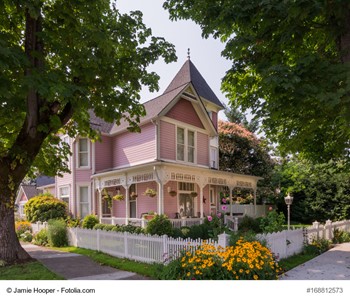 Historic homes are coveted by many for their charm. Some want a home with history while others one with “good bones” of bygone construction methods. Whatever your motivations one thing is clear: owning a historic home is a rewarding experience.
Historic homes are coveted by many for their charm. Some want a home with history while others one with “good bones” of bygone construction methods. Whatever your motivations one thing is clear: owning a historic home is a rewarding experience.
This is usually due to the effort, time and investment put into maintaining the home’s old world charm. Those who take on a historic home should be ready for a project in some capacity either right after buying or down the line.
Maintaining, and sticking to, the classic style and shapes while working under stylistic limitations takes time and effort. Be sure that when purchasing a historic home it’s one of an era whose style you really like. This is because many historic homes have what is called an easement in place. What an easement does is dictate what owners of that particular estate can and can not do to the home to maintain its historical integrity. This can limit everything from additions to siding color.
Historic homeowners should also be ready to get creative during the renovation process. Old houses have their quirks, it’s best to embrace this when making changes and to work with them - not against them. Knocking out walls and shaving down flooring to be perfectly symmetrical compromises the entire structure’s historic roots. If you absolutely must have perfect walls and flooring a historic home is probably not for you.
With that said when viewing homes ensure that any crookedness is from settling over time and not from damage to the sill plate. The sill plate is the topmost part of the foundation and especially vulnerable due to this placement along ground level. If there is damage to the sill plate know that the entire structure of the home is also compromised and in need of serious, and expensive, attention. If this is the case, it’s best to walk for most homeowners.
A warped or compromised sill plate can also mean water damage. Another sign to look for water troubles is a sump pump in the basement. You want to keep an eye out for water damage, as this is a very serious threat to the structure and can also attract all kinds of bugs.
If you have your heart set on a historic home but find all of this overwhelming a historic home expert, either a contractor who specializes in historic homes and/or a local historian that restores homes, can help you significantly through the process. In fact, overwhelmed or not it’s best to bring an expert on board during your buying process. This person should be in addition to your home inspector - not in place of. You also want to be sure to find someone who understands that you want to preserve and restore a historical home and not just gut the building.
Plan your budget well. While restoring a home is usually a passion project for many you still don’t want to overinvest and end up taking a huge loss if you eventually resell. Know what restoration projects in your area typically go for and use these as a guideline for your own budget.
Don’t be afraid to start small if you are on a tight budget or this is your first restoration project. These projects can take years so when planning start here first: roof, windows, and masonry. Create a watertight home first to prevent any further potential damage.
The good news about historic homes is that there are plenty of grants and tax programs for homeowners planning on restoration. Not every loan option will be available to you if the home requires major work but there are loans available specifically for major repairs such as the 203k. Know your options before you start looking as this will a major determination factor of your budget and the degree of work you’ll be able to put into a home.

Originally born on Hilton Head Island, Kendall is a true Island native. She lived in both New York and Charlotte, NC before returning to the Island.
Prior to joining Lighthouse Realty, Kendall first began her real estate career in Charlotte, NC. She is personable and professional, and continually provides her clients with superior service with the utmost integrity.